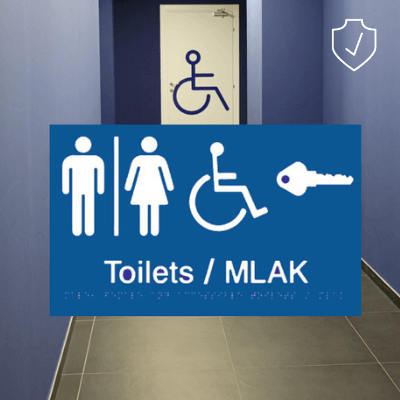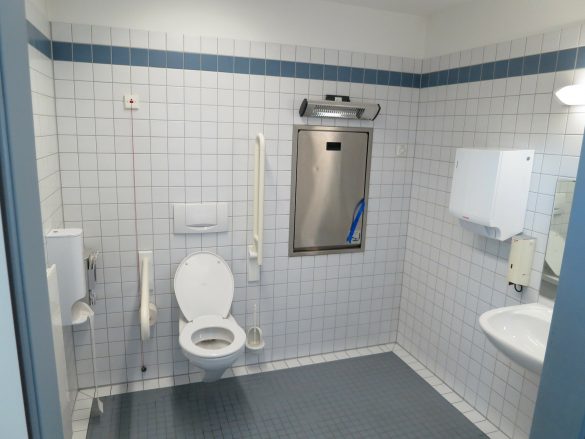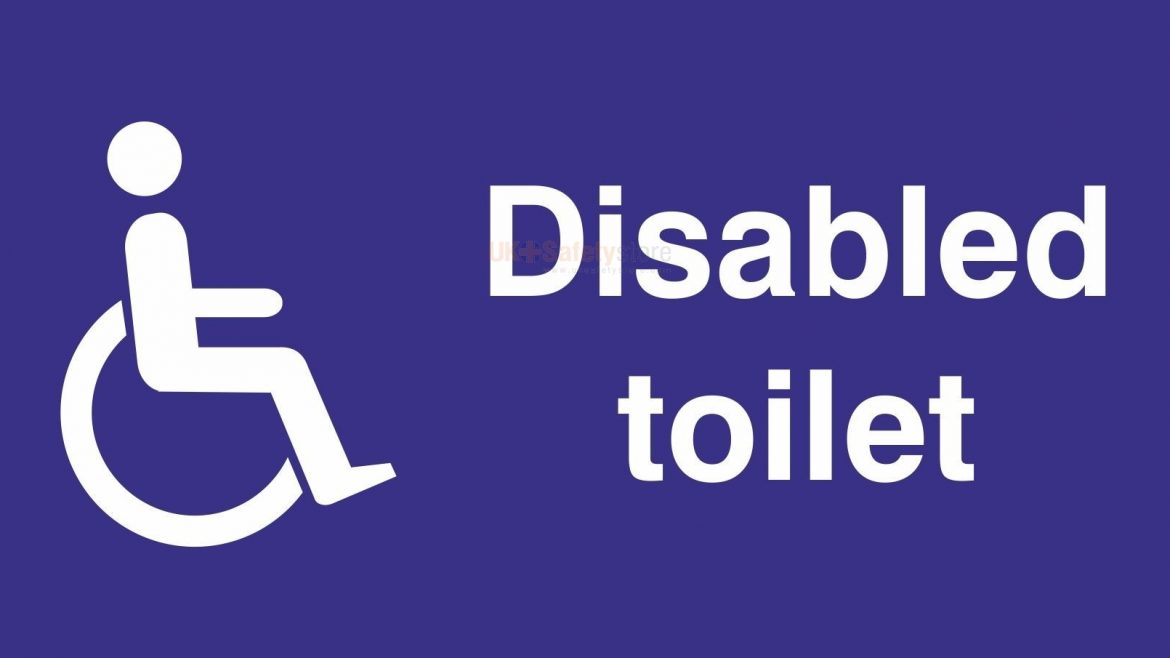I’m uncomfortable using a disabled bathroom. As an able-bodied person, I feel like a trespasser. An interloper who scurries in and out, avoiding eye contact, hastening away in fear of being called out for a shameful deed.
I know I’m not alone in feeling this way.
But how justified is this sentiment? Who, legally and ethically, may use a disabled toilet?
Is it illegal to use a disabled toilet without a disability?
No. While the management of a facility is generally entitled to apply their own access policy, there are no over-arching laws restricting the use of disabled toilets. This applies in Australia, and I’m not aware of any countries where it is different.
An exception to the above are public toilets fitted with the Master Locksmiths Access Key system. People confirmed to have a disability can purchase a key that will open any door with this special lock. The purpose of this system isn’t to restrict access to disabled toilets though. Rather, the intention is that the disabled toilet is kept unlocked during the day, with key holders able to access it after-hours.

The Australian Human Rights Commission, an agency that addresses various types of discrimination, explains this distinction as being due to the length of the delay that a disabled person would likely suffer. The wait time for a disabled toilet to become available would typically be just a few minutes. In comparison, cars are usually left in parking spots for much longer. If a person with disabilities needed to wait hours for one of the few suitable parking spaces to become available then in practice they have been denied access to that establishment.
Is it ‘wrong’ for a person without a disability to use a disabled toilet?
Not really.
The fundamental purpose of a disabled toilet is to provide a toilet that people with disabilities are physically capable of using. If there were no disabled toilets, then some people with a disability would have zero toilets available to them, which could greatly affect their capacity to visit that place.
So in the context of toilets, a disabled sign doesn’t mean it is reserved for people with a disability. Rather, it identifies that this toilet has being specifically designed to aid their use.
After all, the extra space provided by a disabled toilet can be critical for some people without disabilities, such as someone who needs to supervise items, like a pram, that won’t fit in a regular cubicle.
The Australian Human Rights Commission uses the principle of equivalent convenience of access between people with and without disabilities. That is, someone doesn’t get priority access to a toilet solely because they have (or do not have) a disability. If there is a queue for the bathroom, it is just as valid for a person with disabilities to wait as it is for those who will use a regular toilet.

Potty Parity
Equivalent access to toilets extends beyond disability. It has a long history regarding gender.
We’ve all seen the long lines for the bathroom that women are sometimes subject to, while only metres away men are whizzing in and out (pun intended). How does this square with equal access?
Generally, a building will seek to treat the sexes equally by providing an equivalent amount of floor space for each gender’s toilets. But there are biological, cultural and design factors that lead to unequal wait times. Arguably the most significant reason is the urinal. This device is both quicker to use than a cubicle (no doors, locks, or lids to manipulate) and requires less floor space per user. This improves the efficiency of toilet-going for men, meaning male toilets can serve more visitors per unit of both time and floorspace.
So if we consider that wait times should not be determined by gender, it follows that a building must allocate more floor space for women’s toilets than for men. And this is precisely what several modern building codes stipulate. For example, some jurisdictions in China and the USA advise that floor space should be allocated disproportionately towards women at ratios from 1.5:1 to 4:1.
But again, toilet space allocation should be tempered by an awareness that a building’s use and clientele will likely change over time. A fact that many trailblazing women must’ve become uncomfortably aware of as they began working in buildings designed for their historically male-dominated workforce. For example, the United States Congress building didn’t get a female bathroom until 1962.
So, should I use a disabled toilet?
My take is this:
- It is legal to use the disabled toilets any time.
- If there is a suitable regular toilet available then always use this in preference. I wouldn’t choose to use a disabled toilet just because it may be more private or clean – it would be a shame if someone was kept waiting just to indulge these preferences.
- But if there is a queue for the regular toilets then it is okay to use a disabled toilet. Especially if there are multiple unoccupied disabled toilets, or if your visit will be quick.
Of course, if there was a queue to use the normal toilets next to an unoccupied disabled toilet, I’d likely feel social pressured to take the less-sensible option and join the queue. In this situation, perhaps I could suggest to those ahead of me that it’s okay to use the disabled toilet – that way I’m not queue-jumping.
And even if everyone isn’t convinced, at least the conversation would be a welcome distraction from my straining bladder.
Did you like this article?Do you like this site?


Interesting!